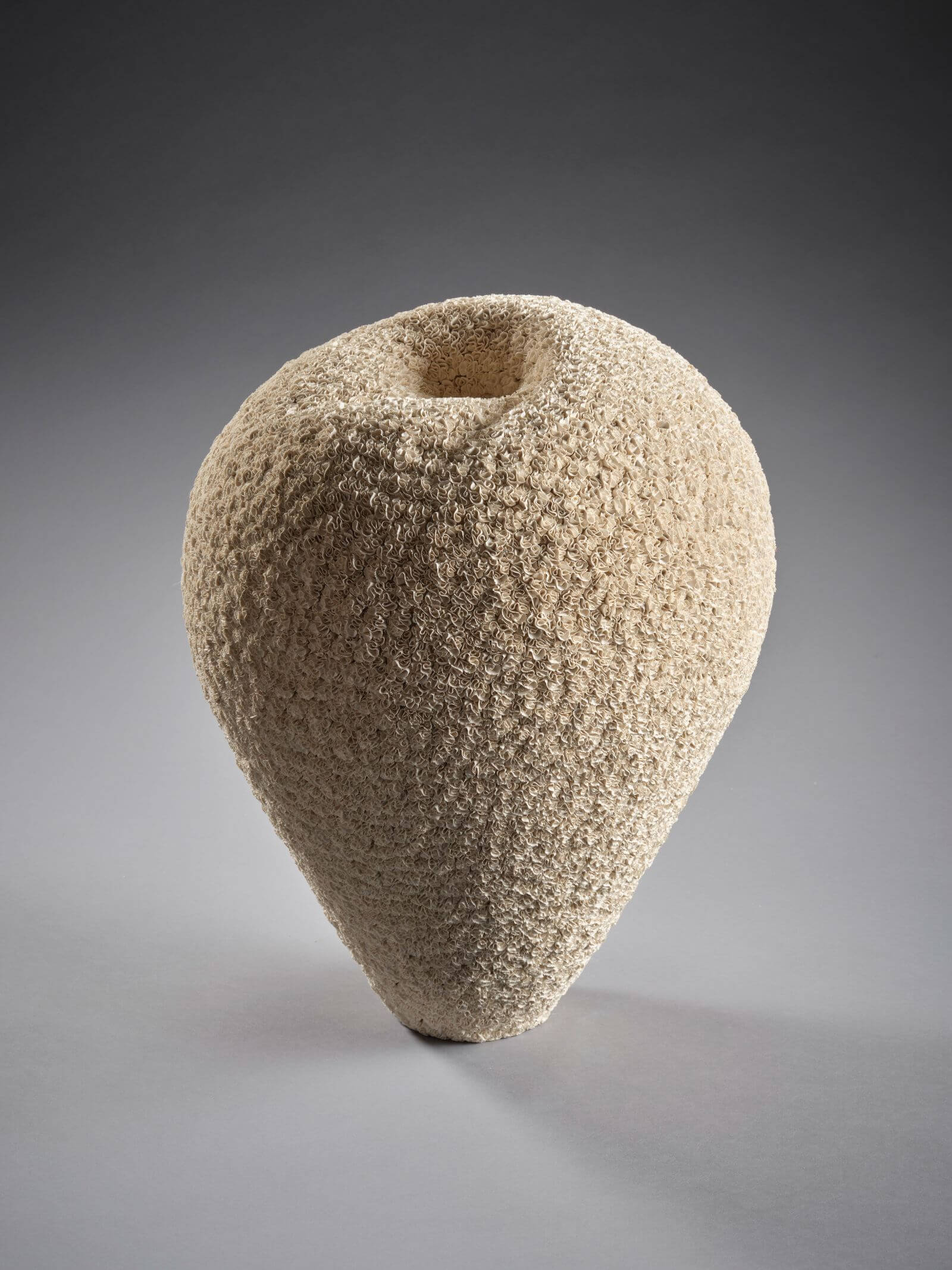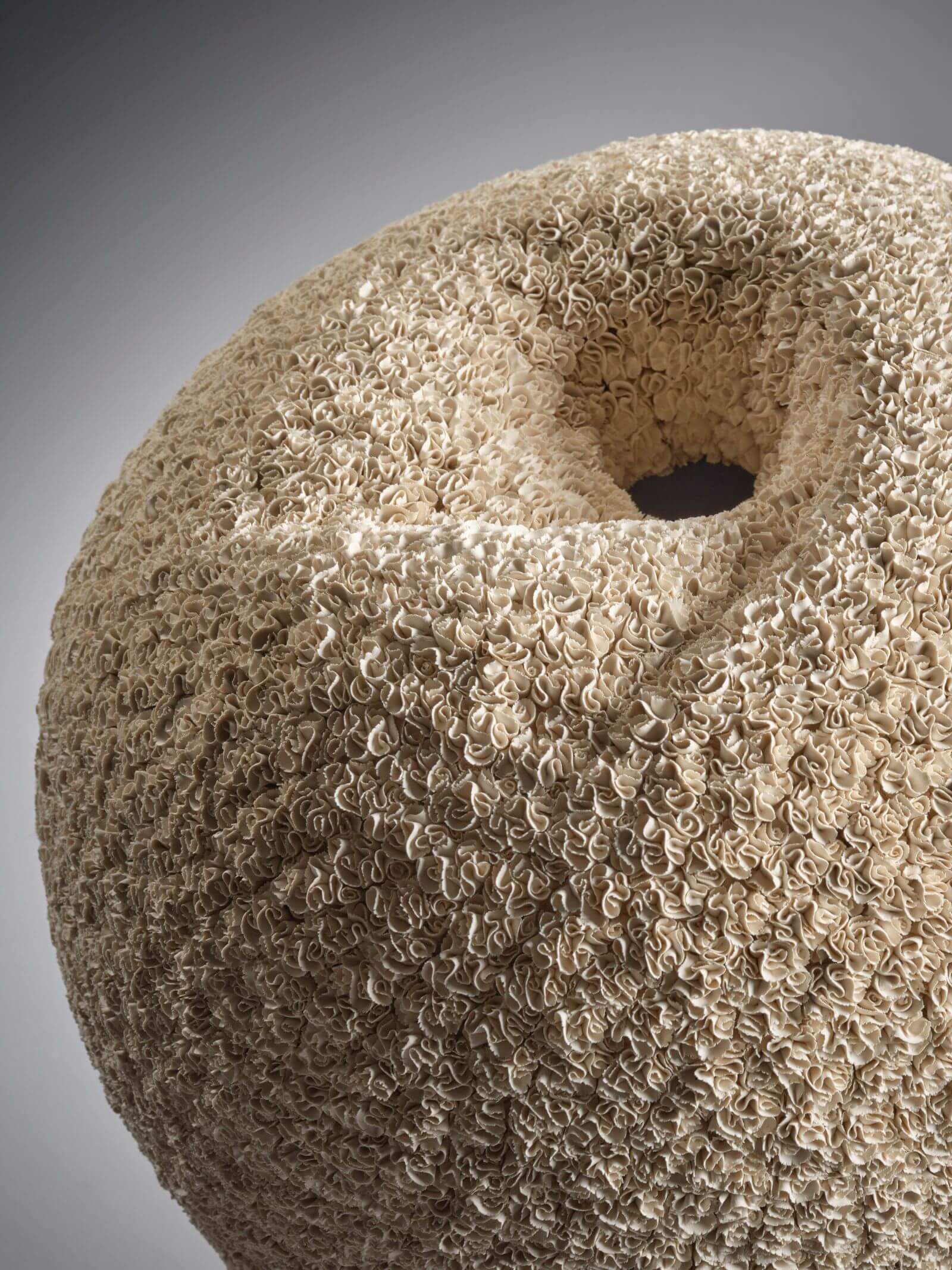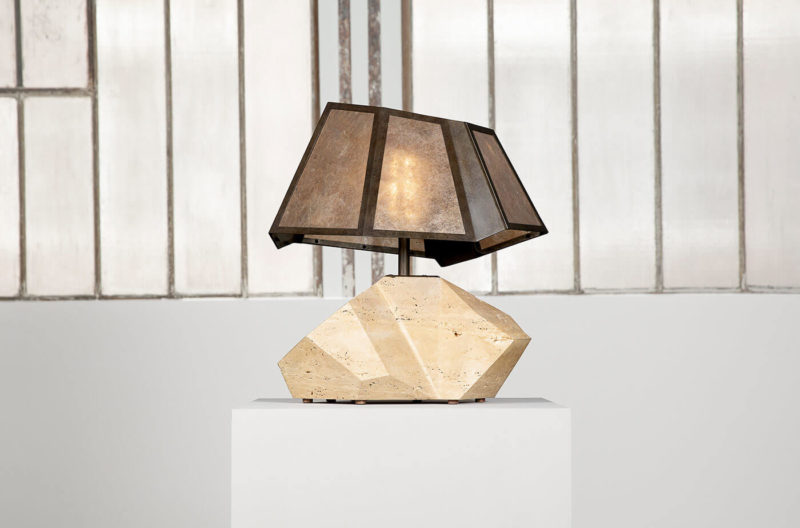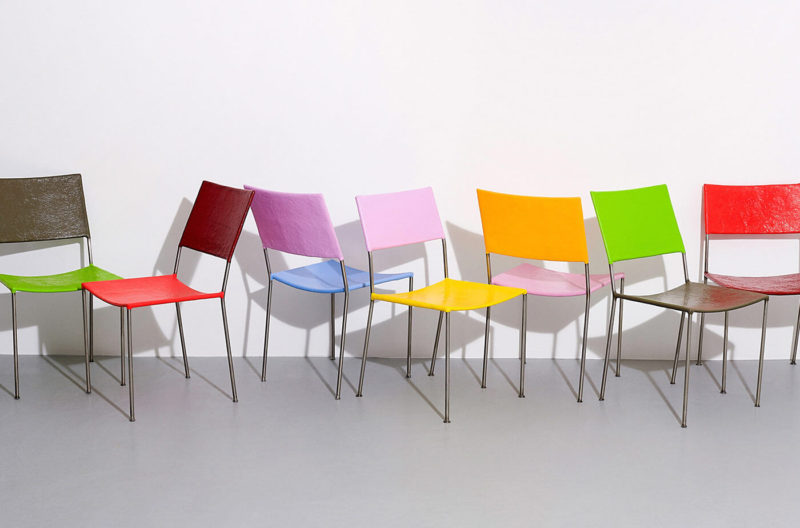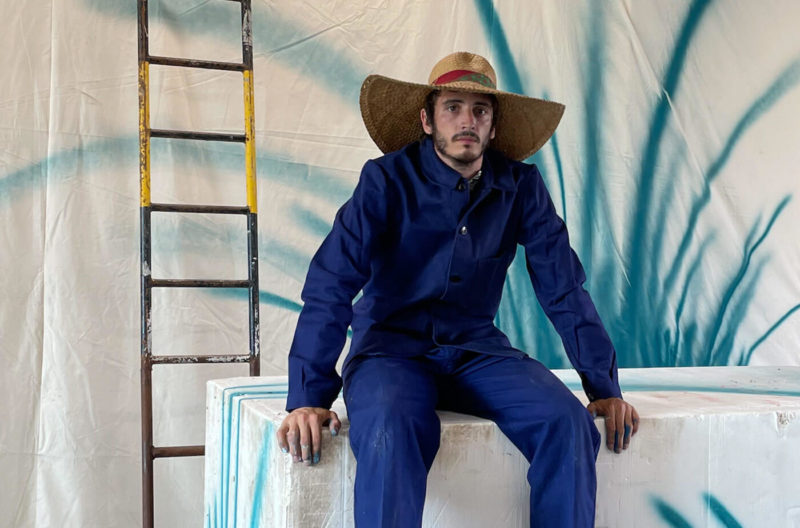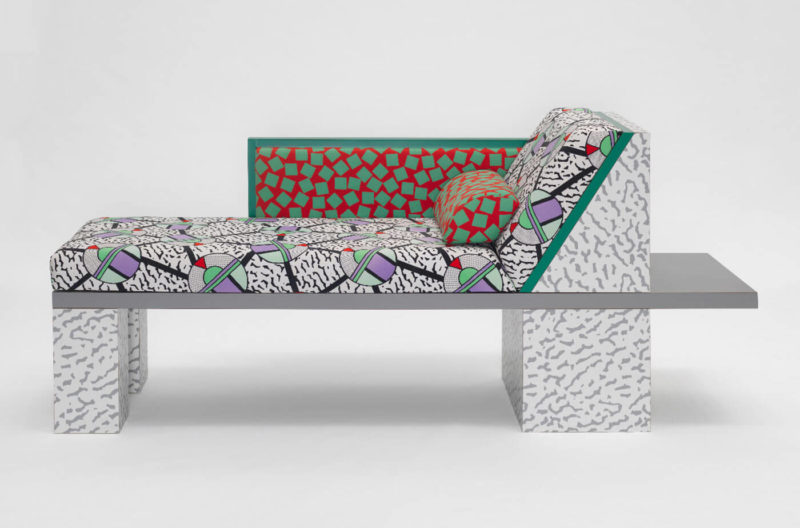Paris Dispatch / September 2022
From ambitious modular furniture by Rino Claessens to Daphné Verley’s colourful totems, via an exhibition of exceptional Japanese potters – ceramics feature strongly this autumn.
Musée Guimet: ‘Toucher le feu. Femmes céramistes au Japon’
Until 3rd October 2022
Galerie kreo: ‘Question.s d’échelle.s’
Until 5th November 2022
Galerie Clara Scremini: ‘Daphné Verley: Ceramics’
Until 8th October 2022
Galerie Scène Ouverte: ‘Rino Claessens: Modular Elements’
Until 22nd October 2022
![Katsumata Chieko, ‘Akoda [Potiron]’, 2017 COURTESY: Katsumata Chieko & Musée Guimet](https://thedesignedit.com/wp-content/uploads/2022/09/771-paris-dispatch-2022-12.jpg)
Katsumata Chieko, ‘Akoda [Potiron]’, 2017
COURTESY: Katsumata Chieko & Musée Guimet
EXHIBITIONS IN PARIS THIS month bear testimony to the political dimension of the arts and the freedom extended by creativity. An exhibition at Musée Guimet is a reminder of how Japanese women were excluded from ceramics until the mid-twentieth century – but then took the medium in their hands and transformed it. The current international fascination with ceramics is also seen in Daphné Verley’s brightly coloured totems and Rino Claessens’s modular furniture. Meanwhile, Galerie kreo explores how designers have given elevated meaning to the humble household ladder.
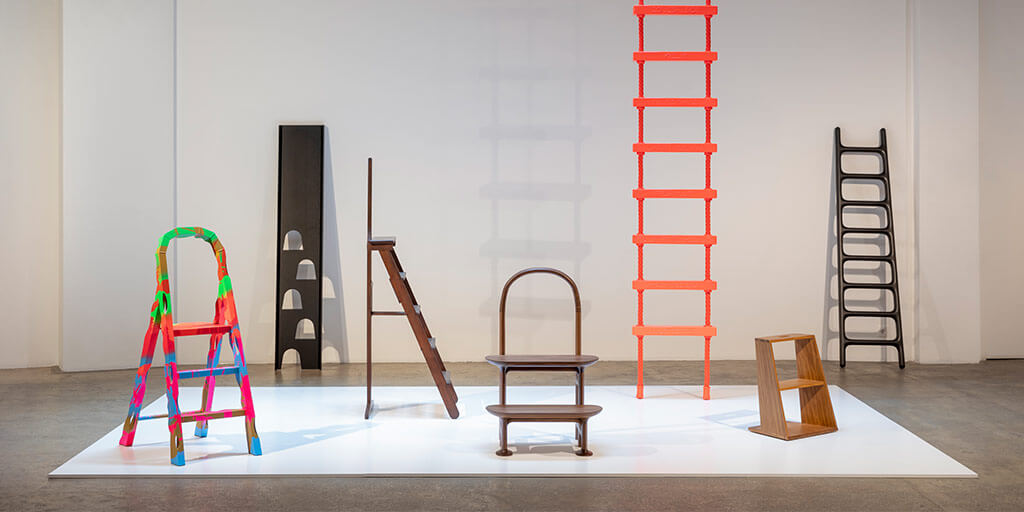
Exhibition view, ‘step by step’ at Galerie kreo
COURTESY: Galerie kreo / PHOTOGRAPH: ® Alexandra de Cossette
‘Toucher le feu. Femmes céramistes au Japon’ at Musée Guimet
Until 3rd October 2022
The founder of Musée Guimet, Émile Guimet (1836–1918), was passionate about collecting Asian arts. But at the time he would have visited Japan, women were barred from using potter’s wheels or kilns. For centuries, ceramic processes were transmitted exclusively from father to son. This exhibition is fundamentally important for showcasing how audacious women ceramicists have been since opportunities opened up for them.
-
Hattori Makiko, ‘Rounded conical white sculpture’, 2019
COURTESY: Hattori Makiko & Musée Guimet / PHOTOGRAPH: © RMN-Grand Palais (MNAAG, Paris) / Thierry
-
Hattori Makiko, ‘Rounded conical white sculpture’, 2019 (detail)
COURTESY: Hattori Makiko & Musée Guimet / PHOTOGRAPH: © RMN-Grand Palais (MNAAG, Paris) / Thierry
It starts with nineteenth-century household objects by Ōtagaki Rengetsu, a Buddhist nun who modelled clay with her own hands without using a potter’s wheel and inscribed poems into her works. Other exhibits represent three generations of ceramicists since the late 1940s and early 1950s, when women first became eligible to study art at university. What emerges in this intimate, tightly curated show is the meticulous, graceful and organic qualities of the pieces and the elaboration of techniques. For instance, Ono Hakuko’s vase from 1980 – with its gold leaf placed under yellow glass – is juxtaposed with more recent creations.
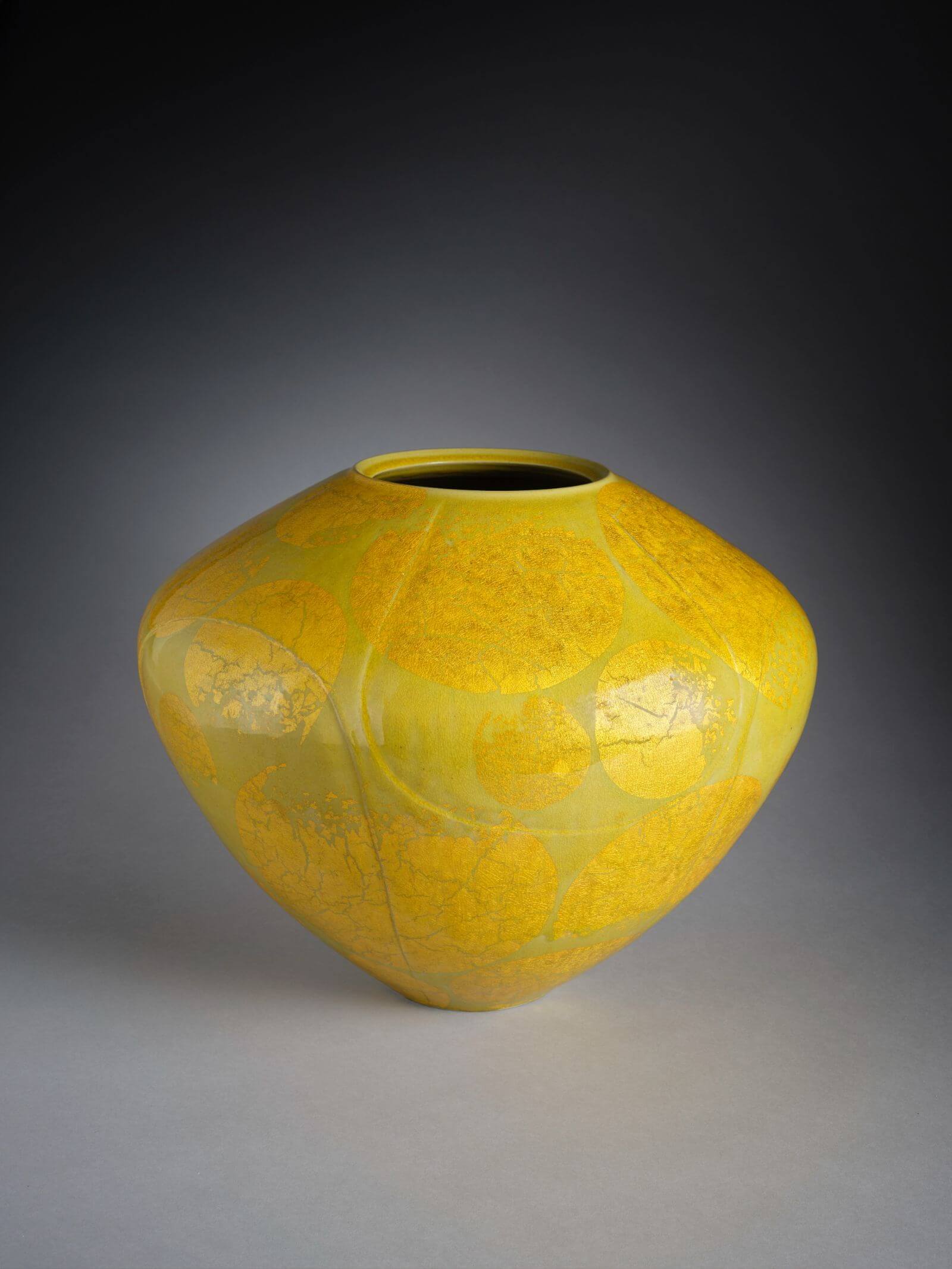
Ono Hakuko, ‘Vase’, circa 1980
COURTESY: Ono Hakuko & Musée Guimet
Utterly spellbinding is Fujino Sachiko’s off-white matt-glazed stoneware, ‘Form 20-7’ (2020) – a surrealist work with ethereal folds evocative of a rose that from a certain angle resembles a deconstructed bust. The beautifully mastered piece resting on conch-like pleats is informed by Sachiko’s studies in fashion prior to ceramics.
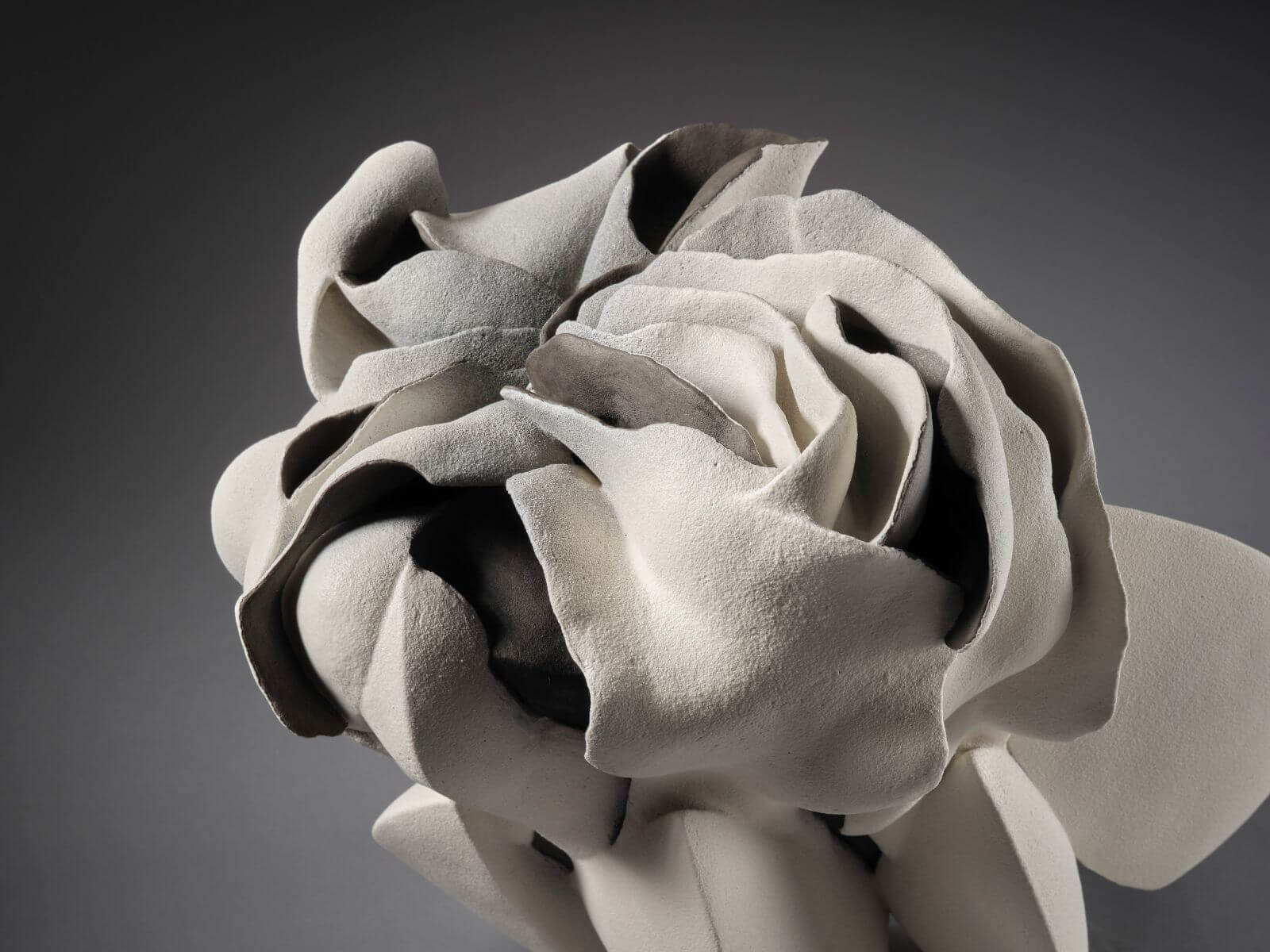
Fujino Sachiko, ‘Form 20-7’, 2020
COURTESY: Fujino Sachiko & Musée Guimet / PHOTOGRAPH: © RMN-Grand Palais (MNAAG, Paris) / Thierry Ollivier
Among other second-generation ceramicists are Katsumata Chieko, who has made a gorgeous green, speckled pumpkin, ‘Akoda (Pumpkin)’ 2017; Hoshino Kayoko, who embellished with fine, narrow lines her austere ‘Cut out-Ring 18-2’ (2018), and Tokumaru Kyoko, who assembled various elements to realise a sculpture with a female breast emerging from a profusion of flowers, ‘Cythera Island’ (2017).
Among the younger practitioners is Hattori Makiko, whose rounded conical clay sculpture from 2019 is adorned with tiny, delicate petals, and Tanaka Yu’s bright yellow cube from 2020 seemingly wrapped in furoshiki, a square piece of cloth used for gift wrapping.
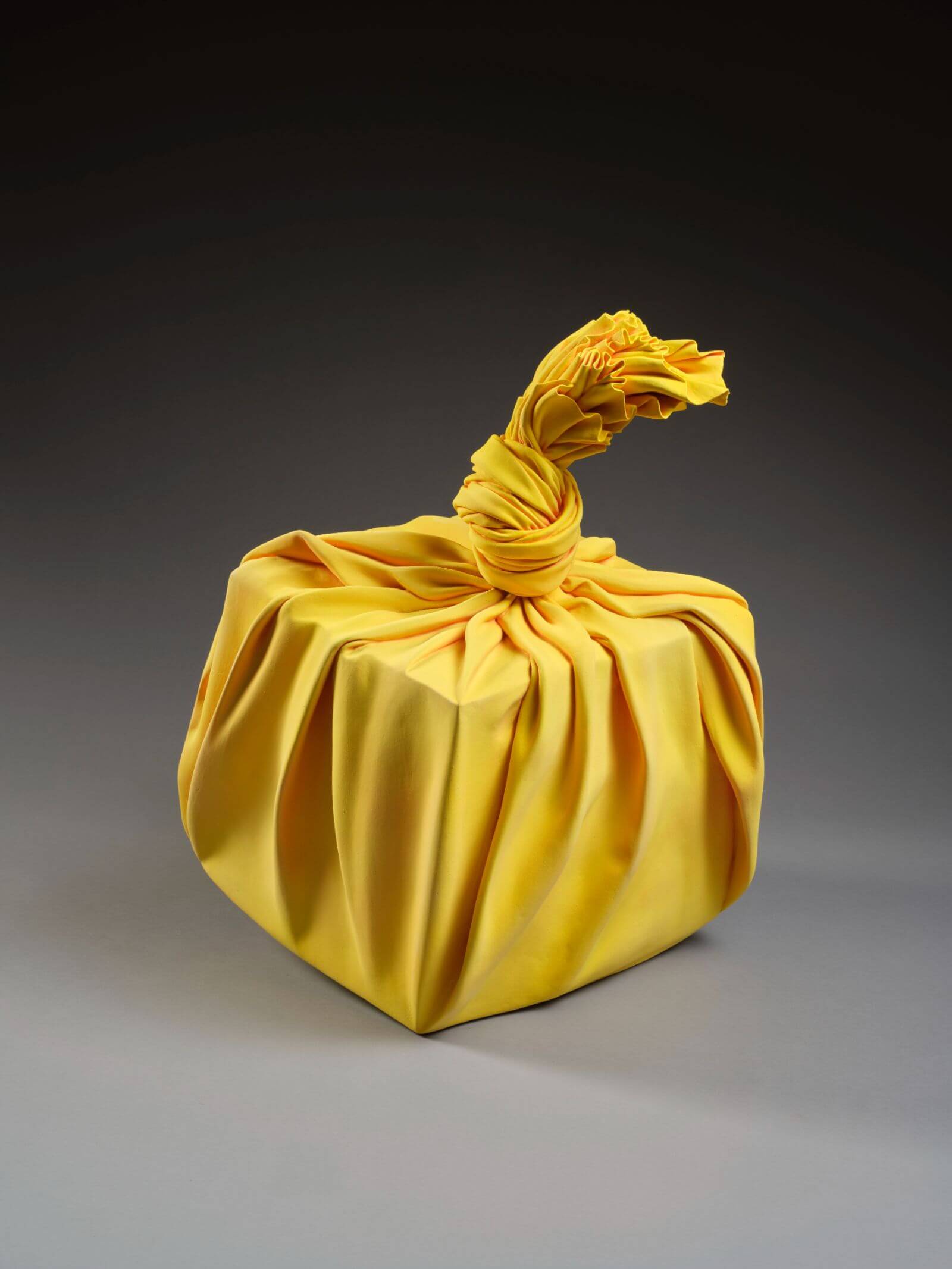
Tanaka Yu, ‘Yellow sculpture in the shape of furoshiki tied around a cube’, 2020
COURTESY: Tanaka Yu & Musée Guimet / PHOTOGRAPH: © RMN-Grand Palais (MNAAG, Paris) / Thierry
‘Question.s d’échelle.s’ at Galerie kreo
Until 5th November 2022
Ladders come out of the store cupboard and into the spotlight in this witty exhibition at Galerie kreo. Through more than 30 pieces, it redefines the mundane household object as something not merely utilitarian, but as worthy of contemplation as a work of art.
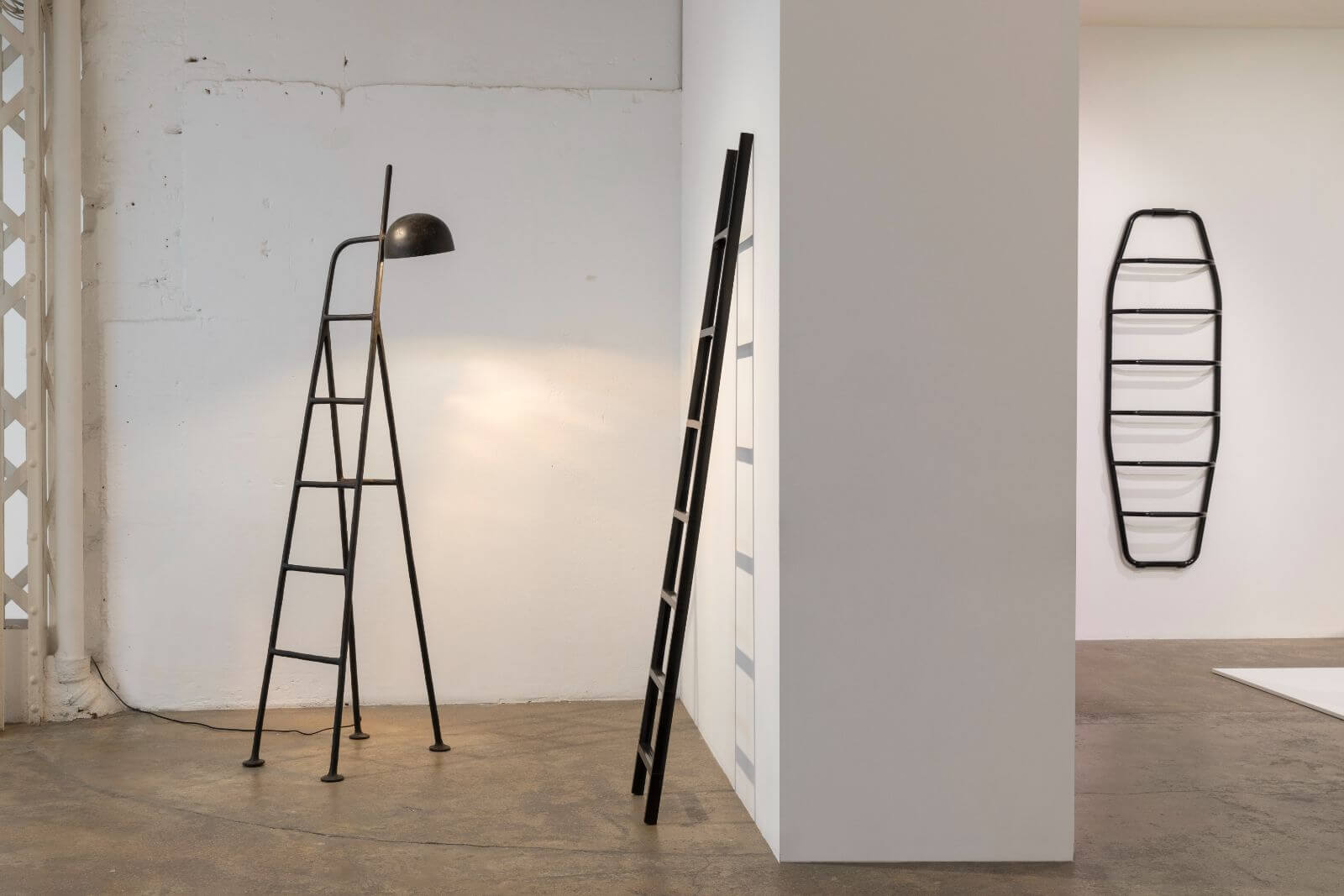
Exhibition view, ‘step by step’ at Galerie kreo
COURTESY: Galerie kreo / PHOTOGRAPH: ® Alexandra de Cossette
Following on from previous typological shows on mirrors, stools and necklaces, it reflects the view Didier Krzentowski, kreo’s founder, takes of his gallery as a laboratory for design. Krzentowski commissioned more than a dozen designers to reflect upon the ladders, and these new creations are presented alongside historical works.
The diversity is startling. A wooden step ladder from around 1860 is juxtaposed with Virgil Abloh’s red, floor-to-ceiling ‘World Leaders’, the names of black musicians written on each step, and Marc Newson’s light and sleek ‘Carbon Ladder’ (2008). In another display, Alessandro Mendini’s conceptual ‘Alchimia’ (1976) – a dusty pink raised block with an impossible-to-sit-on chair – is shown with Konstantin Grcic’s pale grey ‘Volume W’ and Studio Wieki Somers’s ‘Gran Paradiso’, reminiscent of a wigwam.
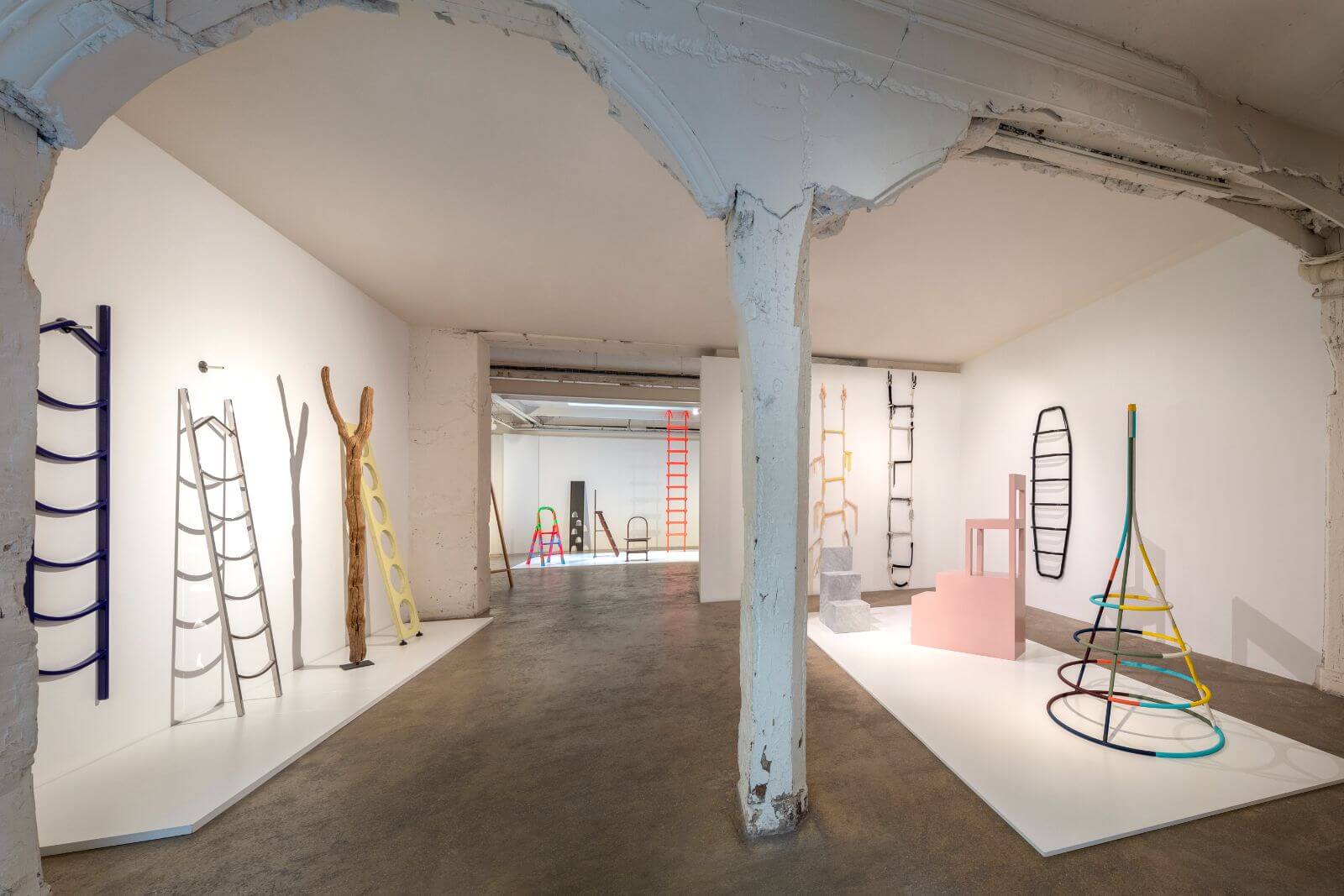
Exhibition view, ‘step by step’ at Galerie kreo
COURTESY: Galerie kreo / PHOTOGRAPH: ® Alexandra de Cossette
What’s fascinating is how designers have experimented with hybridised forms: Ronan and Erwan Bouroullec have combined a silver ladder with a shelving system, ‘Ciel wall-shelf’; Guillaume Bardet has used a ladder to make a floor lamp, ‘Trait d’Union – Hyphen’; and Pierre Charpin has placed a mirror on top of a ladder, ‘Lassù’.
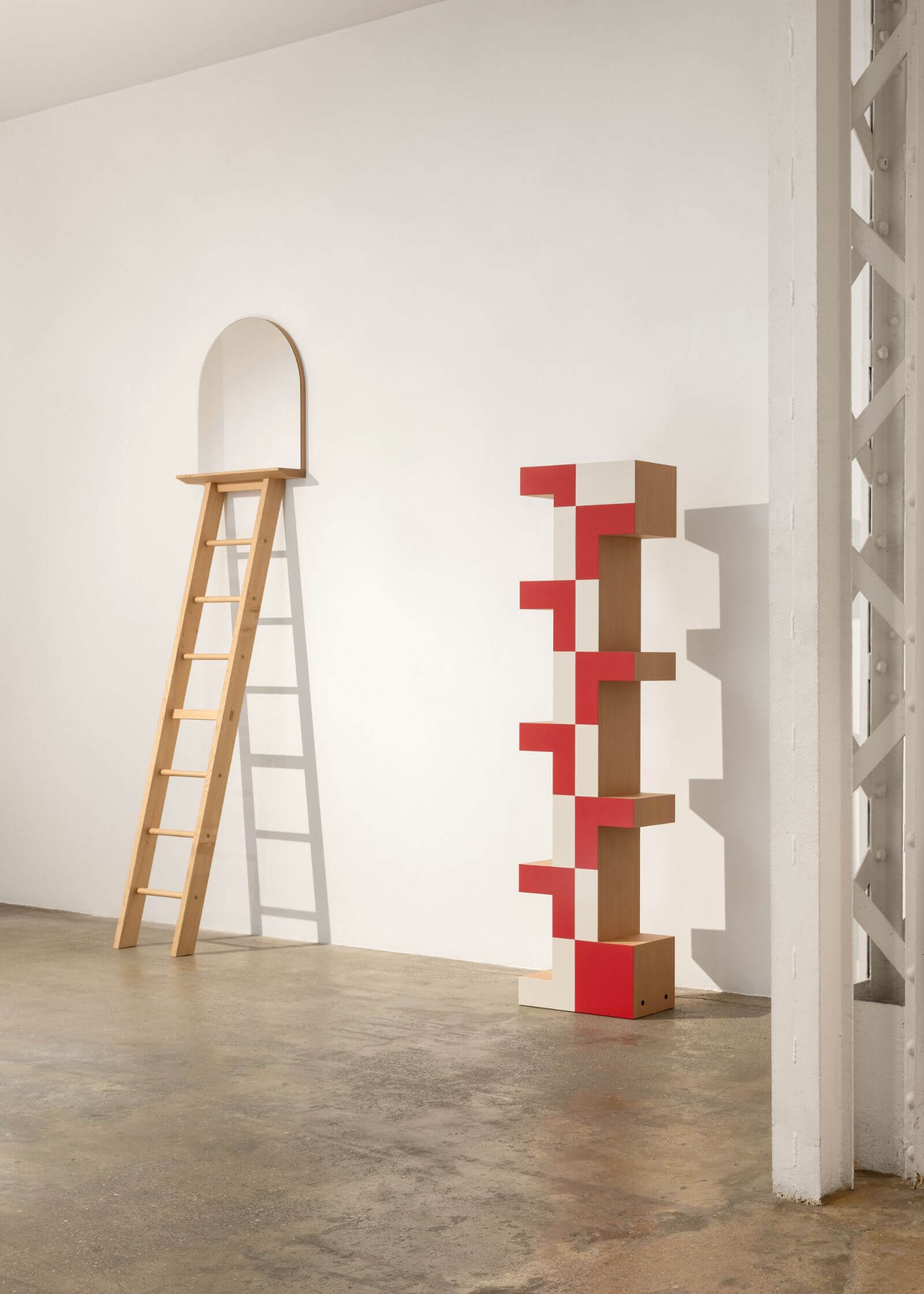
Exhibition view, ‘step by step’ at Galerie kreo, with (left) Pierre Charpin, ‘Lassù’, and François Bauchet, ‘Level’
COURTESY: Galerie kreo / PHOTOGRAPH: ® Alexandra de Cossette
Meanwhile, Hella Jongerius has created textile sculptures, ‘Twisted Steps’, that look too fragile to be used, while Front Design has come up with ‘Tree Ladder’, its steps being unclimbable branches. The most spiritual piece is Vidya Gastaldon’s ‘Healing Object’ (2019) – a found ladder that has been lovingly upcycled into an artwork with painted flowers and evil-eye motifs warding off malevolent forces.
‘Daphné Verley: Ceramics’ at Galerie Clara Scremini
Until 8th October 2022
Inside Galerie Clara Scremini near the Pompidou Centre, rows of bright, horizontally striped totems by Daphné Verley enliven the narrow white-walled space. Verley, who divides her time between Rhode Island and Bordeaux, conceived each individual piece as a female figure.
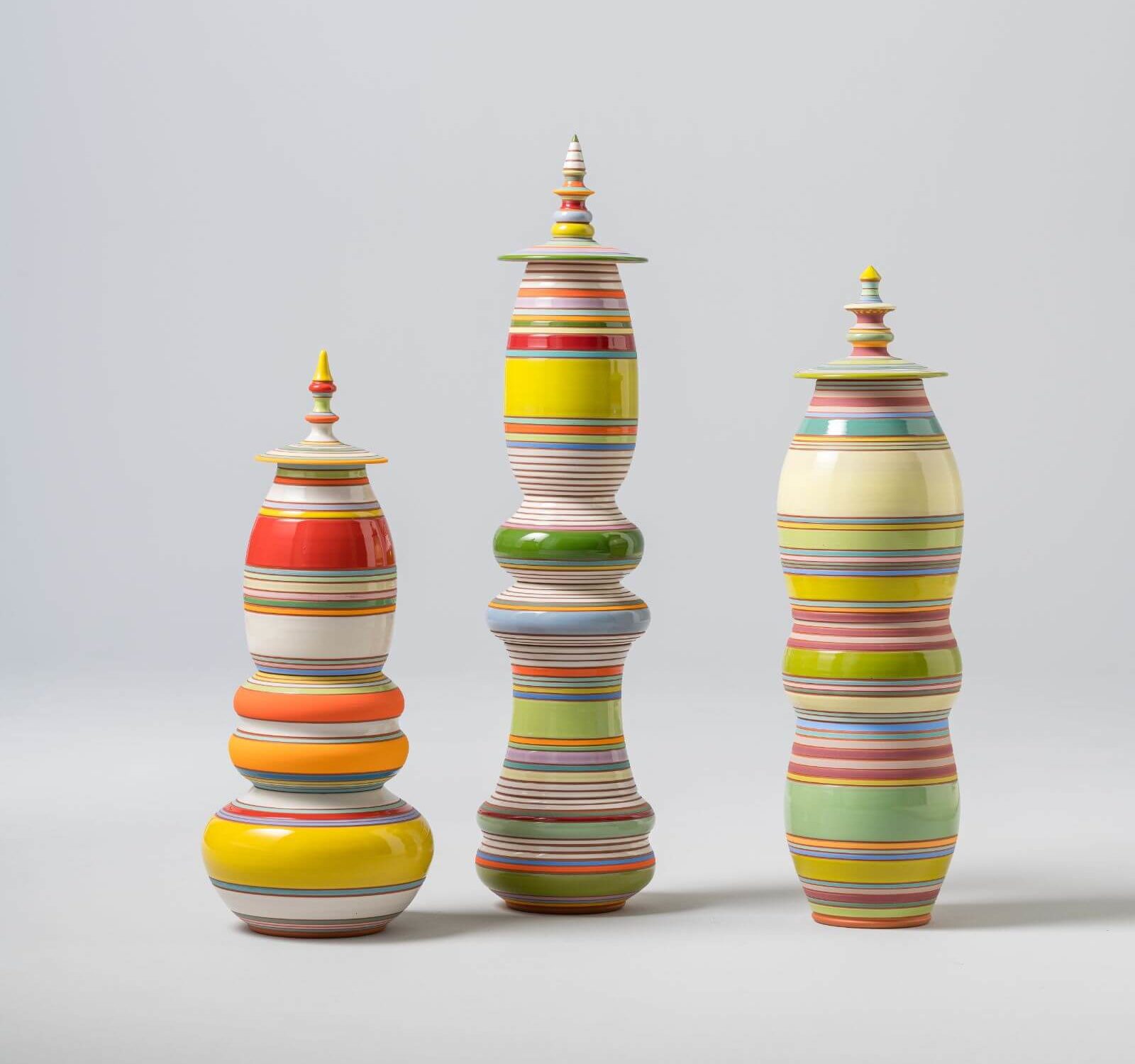
‘Daphné Verly: Ceramics’ at Galerie Clara Scremini
COURTESY: Daphné Verly & Galerie Clara Scremini
“The totems came about as a way of celebrating remarkable women in my life – sisters, mothers, friends, students – and giving each totem a personality in terms of silhouette and colour story,” Verley, 68, says. “This fourth generation of totems is more about women universally as a strength and force.”
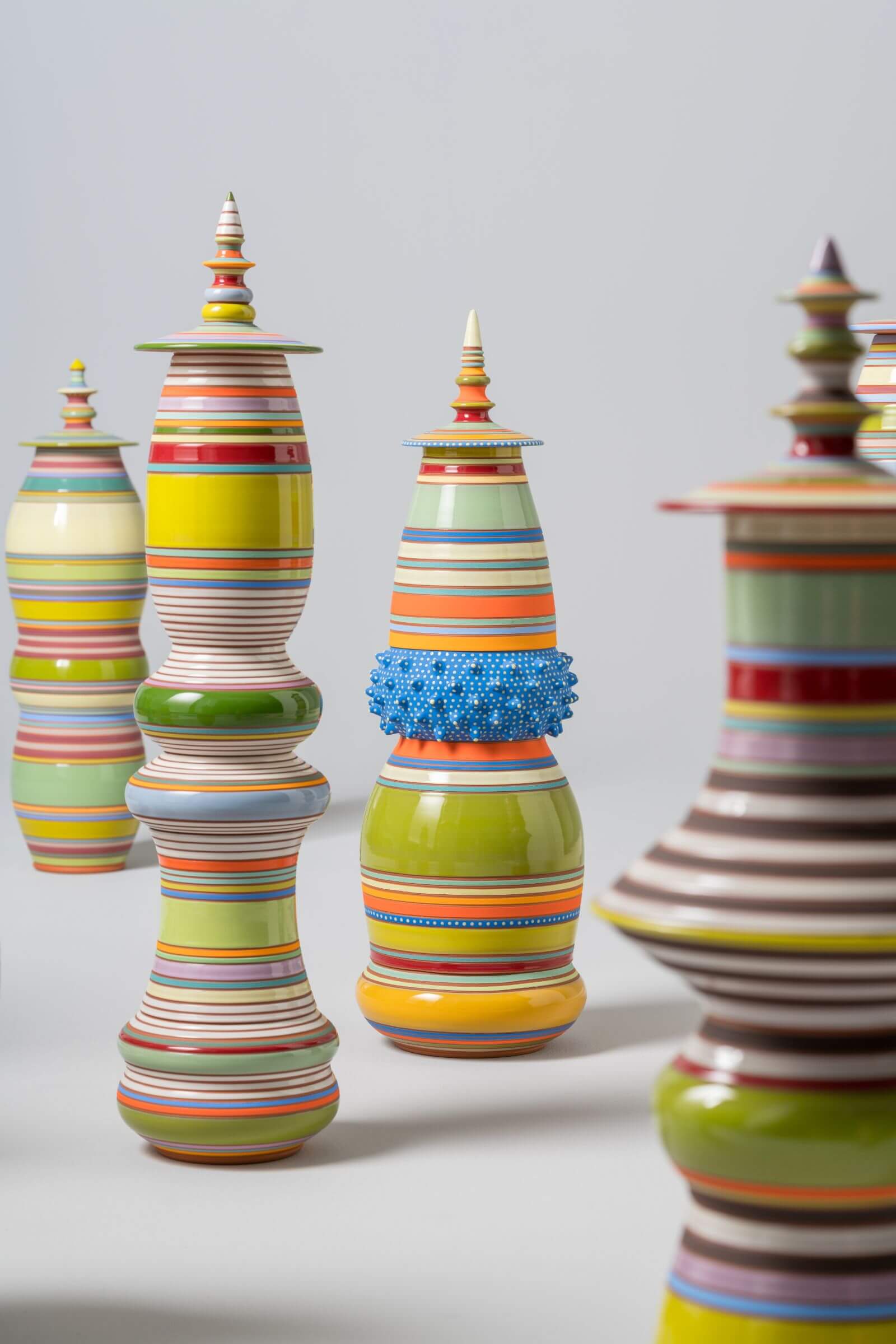
‘Daphné Verly: Ceramics’ at Galerie Clara Scremini
COURTESY: Daphné Verly & Galerie Clara Scremini
For Verley, making ceramics has been a lifelong labour of love. Decades before the renewed interest in the medium, she decided at the age of 18 to study ceramics at Syracuse University. Hailing from a large artistic family, what appealed was the idea of making functional objects belonging to the everyday ritual of dining. Viewing the surface as “a canvas to embellish”, she has endlessly explored her passion.
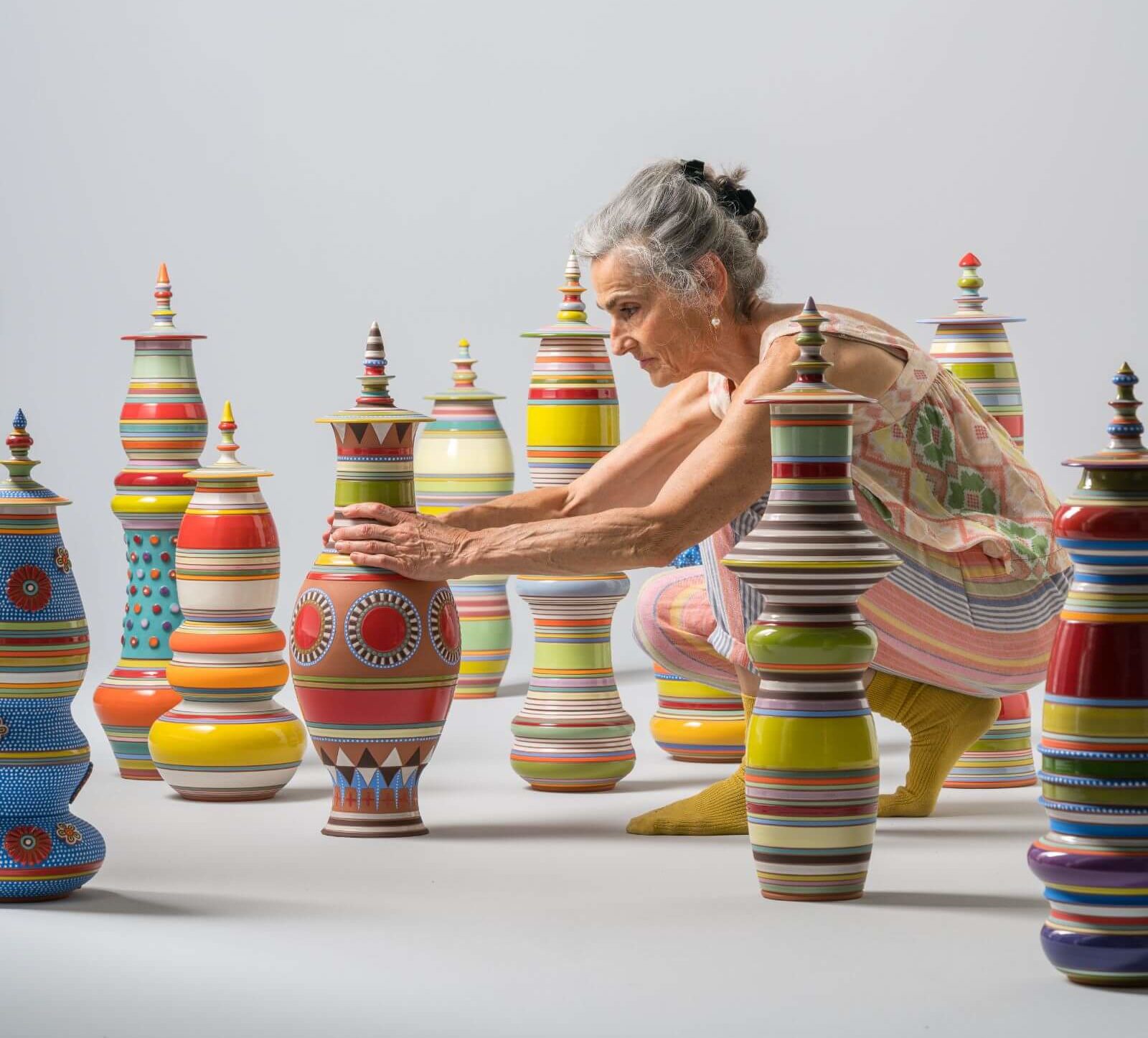
‘Daphné Verly: Ceramics’ at Galerie Clara Scremini
COURTESY: Daphné Verly & Galerie Clara Scremini
Indeed, when Verley popped into Scremini’s gallery a few months ago and showed photos of her work, Scremini offered Verley a show on the spot. “Her work is unique and incredible,” Scremini says, smiling.
Made with painstaking precision, each totem is composed of up to seven sections, some patterned with circles, dots and flowers, that have been seamlessly stacked onto each other, giving the illusion of being one single form. What emanates is the joyful distillation of Verley’s observations about cultures in Tibet, Mexico and Australia. Reminiscing on Tibet, she recounts: “I was completely fascinated by the colours, absorbing the beauty in the simplest elements – a necklace, a finial on a temple, a cloth someone was wearing or a braid on a horse. It all soaks in and comes out with my own interpretation.”
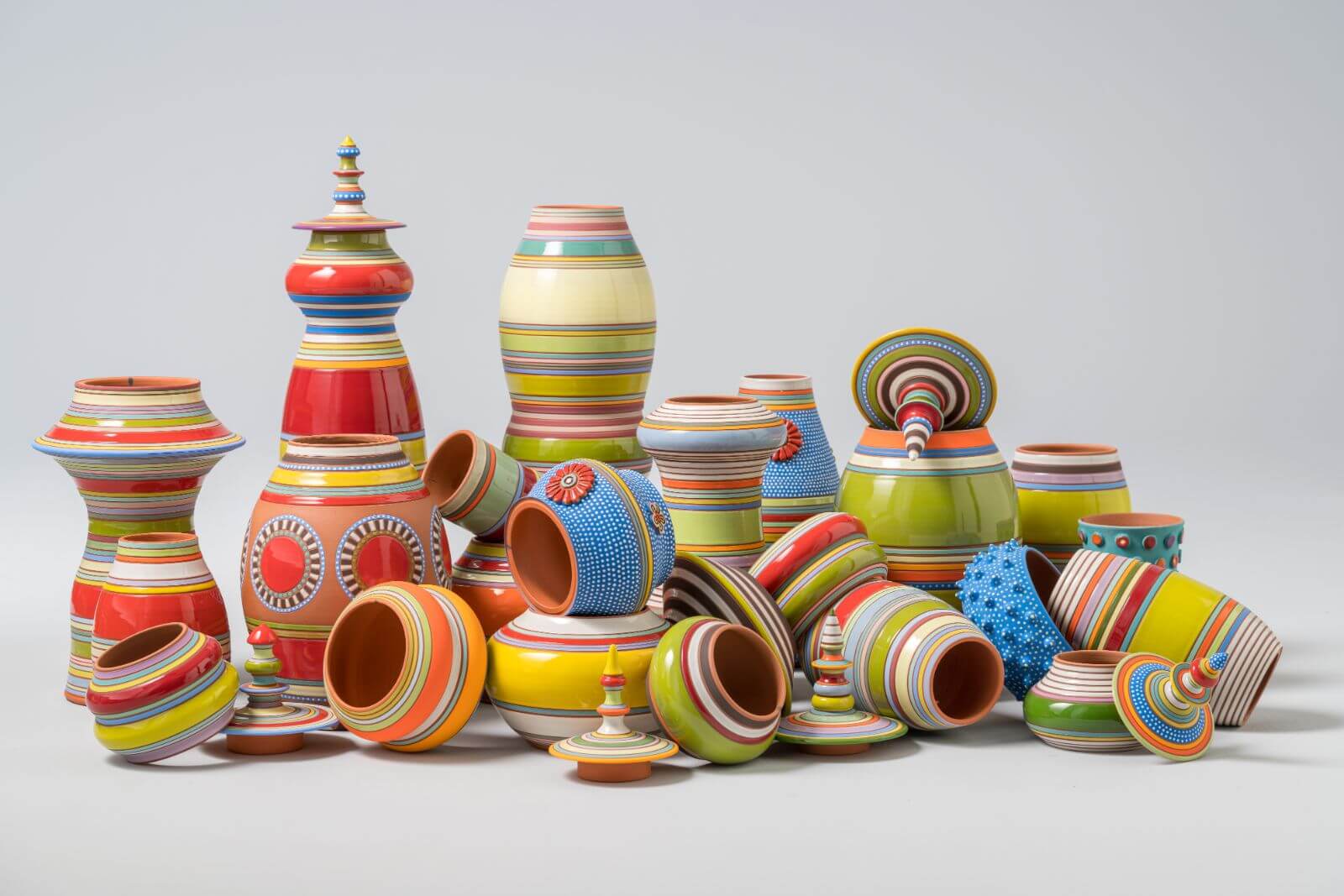
‘Daphné Verly: Ceramics’ at Galerie Clara Scremini
COURTESY: Daphné Verly & Galerie Clara Scremini
‘Rino Claessens: Modular Elements’ at Galerie Scène Ouverte
Until 22nd October 2022
Rino Claessens has upturned any preconception of ceramics being small-scale sculptural objects in his first exhibition at Galerie Scène Ouverte. The young Dutch designer has ambitiously conceived the entirety of his furniture show by developing an ingenious system of five modular ceramic elements.
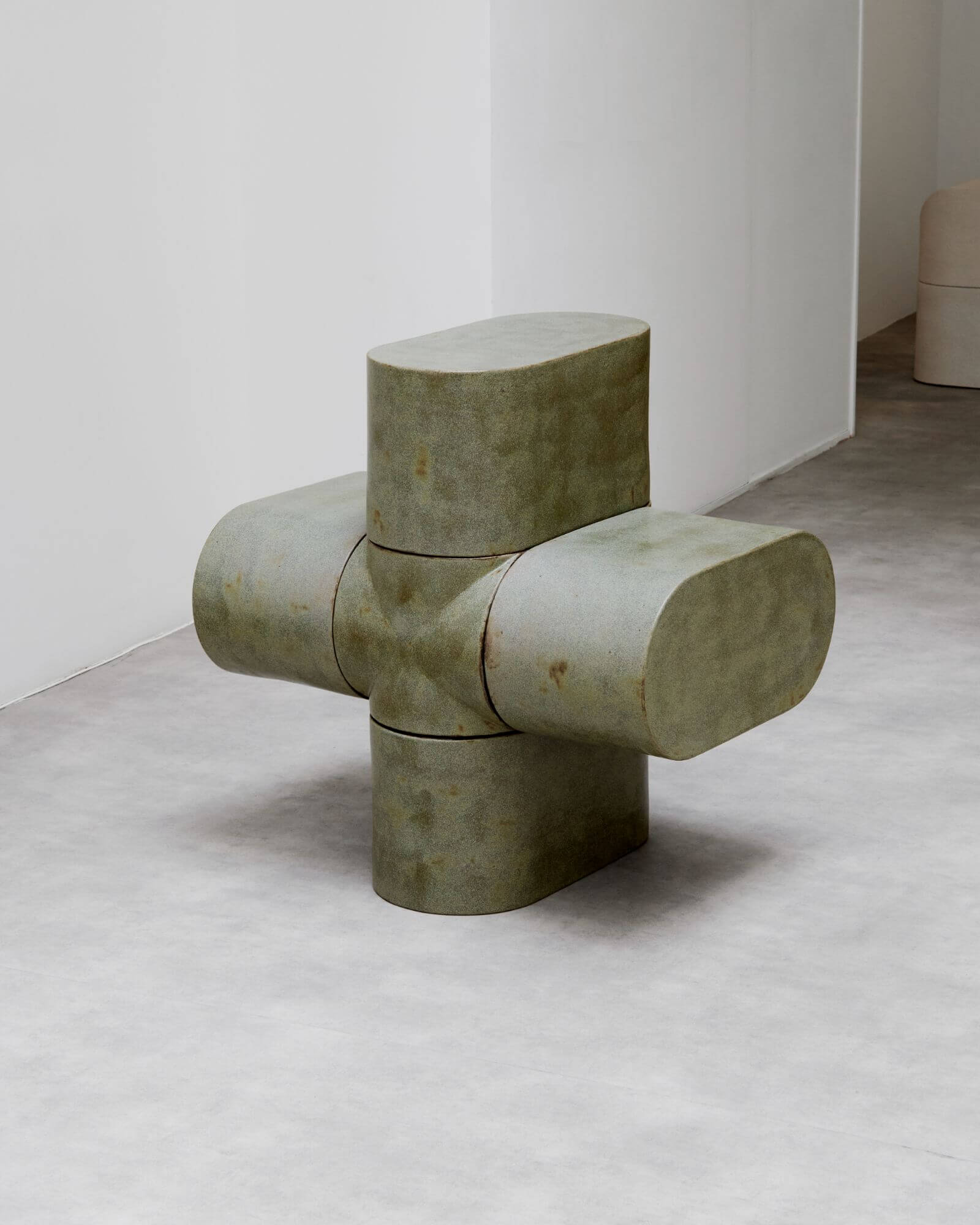
Rino Claessens, ‘Modular Ceramic Console’, 2022
COURTESY: Galerie Scène Ouverte
Comprising gently curvilinear shapes (including one end-shape, one cross-shape, a T-shape and two others), these five elements have served to create, through their repetition, a bookcase, a serpentine bench, a console and a chair. Like an ultra-sophisticated exercise in DIY, the elements in various tones and finishings have been combined to produce this harmonious ensemble. The only time that Claessens, 28, compromised was in making the chair, for which he sliced one of the elements.
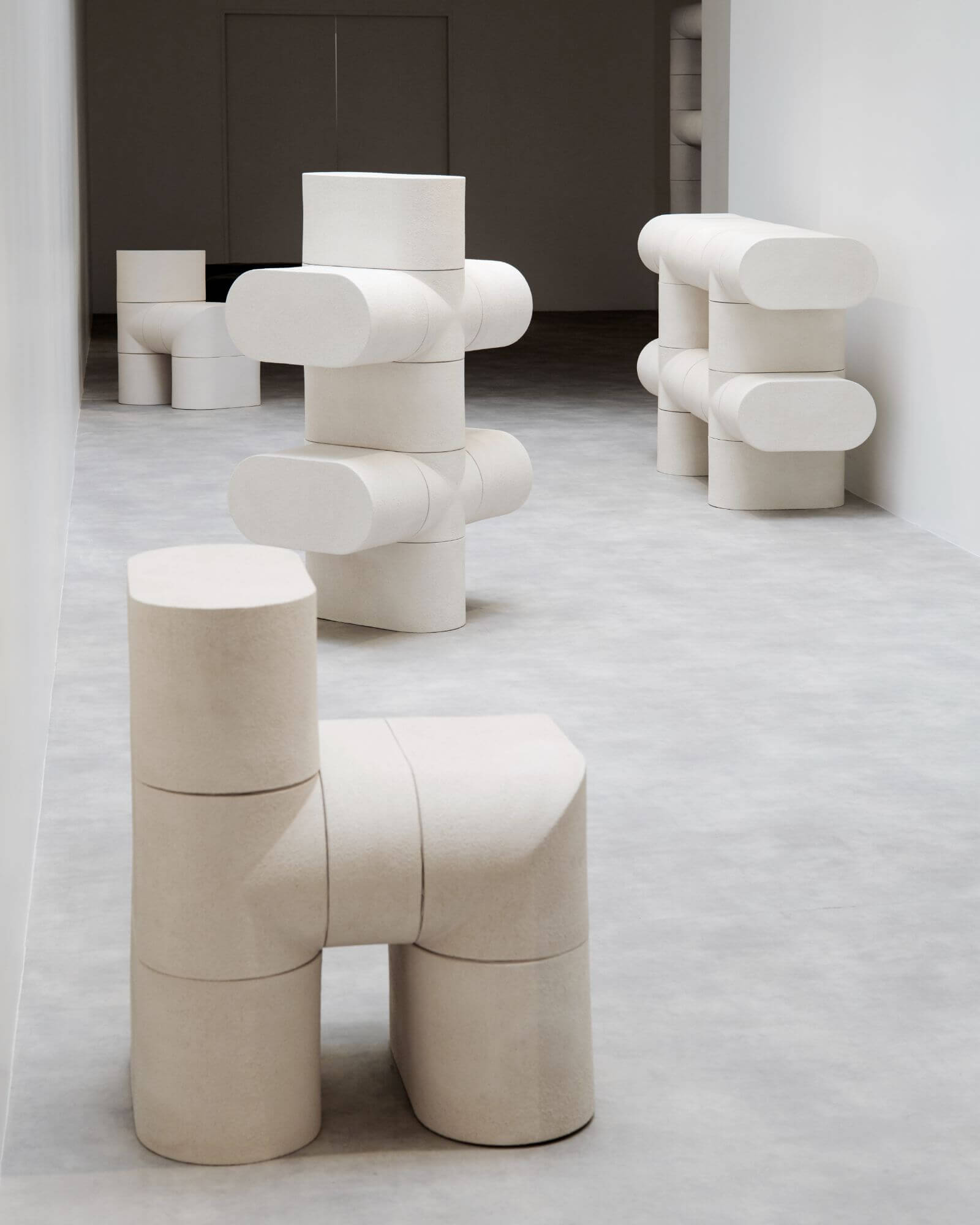
Exhibition view, ‘Modular Elements’ by Rino Claessens
COURTESY: Galerie Scène Ouverte
The initial idea for the research-based project came serendipitously. “I’d been making tables in ceramics and one day for a magazine shoot I stacked them onto each other like a pillar,” Claessens, 29, says. “Then the idea came that by combining different objects after firing them in the kiln, I would have more possibilities in terms of size and the kind of objects that I could create.”
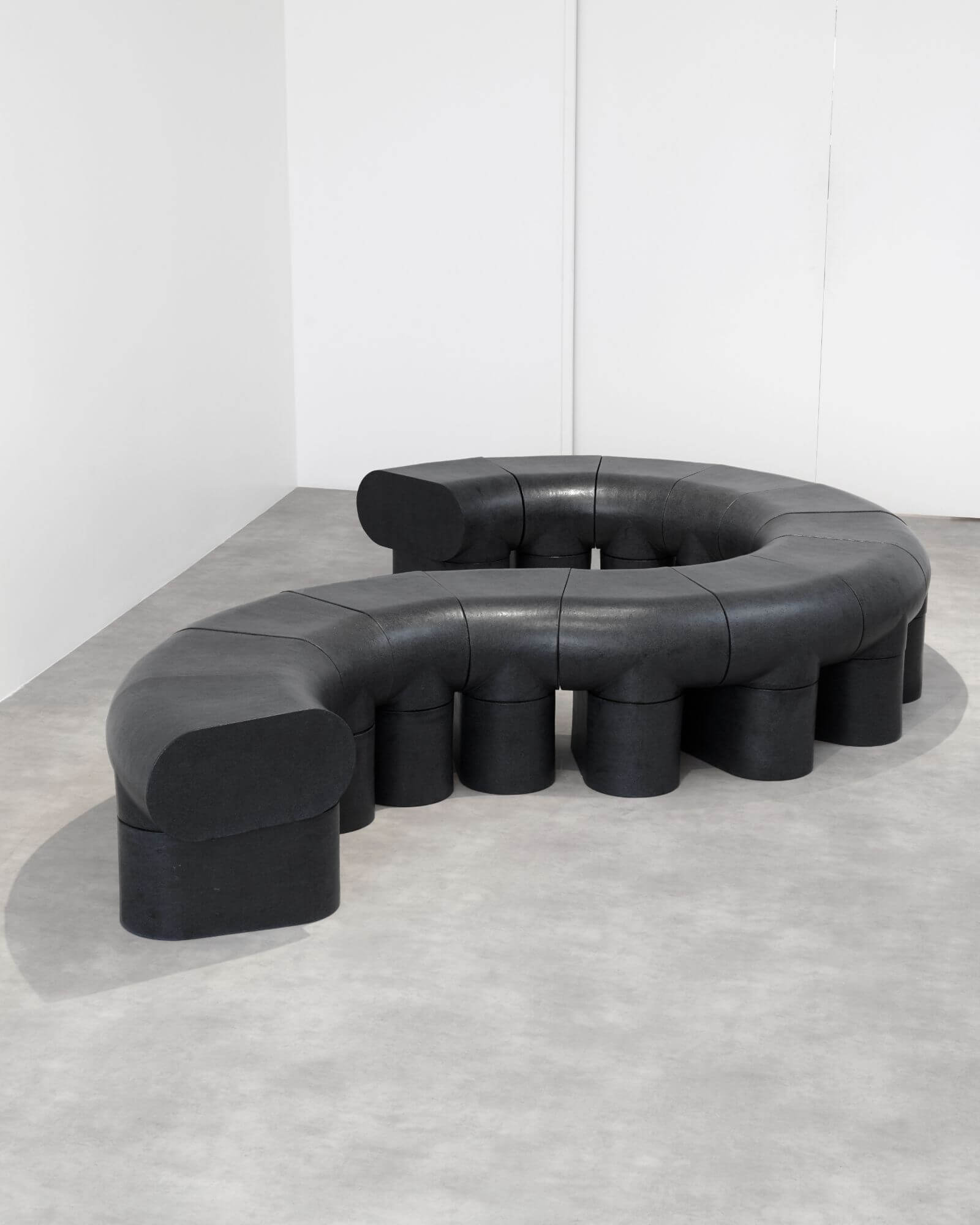
Rino Claessens, ‘Modular Ceramic Bench’, 2022
COURTESY: Galerie Scène Ouverte
Claessens became fascinated with ceramics while studying at Design Academy Eindhoven. In 2017, he embarked on a six-month residency programme in Arita, the Japanese birthplace of porcelain-making where he researched traditional Japanese tableware for his project ‘Kodai’. Upon his return to the Netherlands, he became keen to experiment further and stretch the material’s tactile properties to make larger pieces.
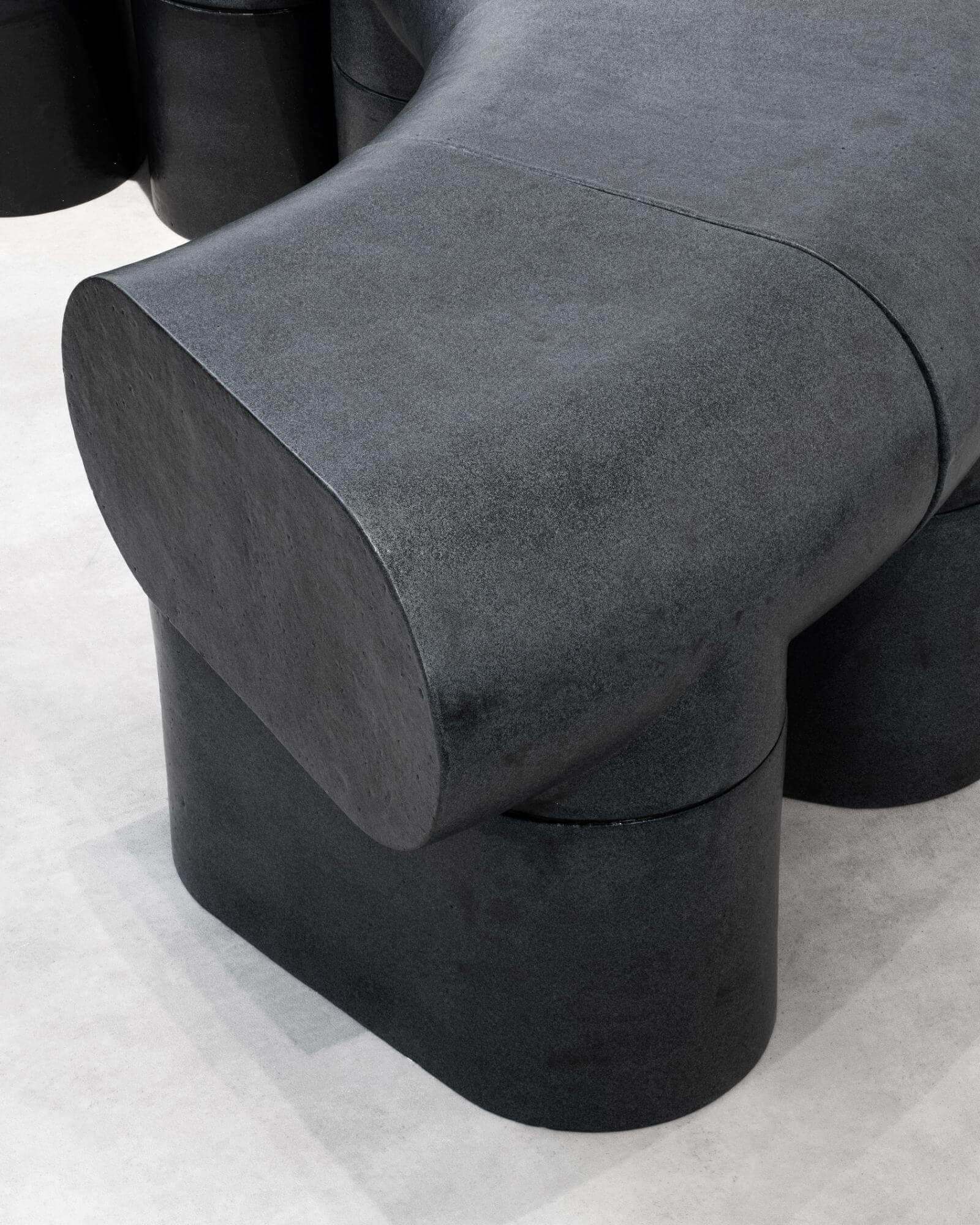
Rino Claessens, ‘Modular Ceramic Bench’, 2022 (detail)
COURTESY: Galerie Scène Ouverte
“I’m not saying it’s bad to make a vase out of ceramics, but it’s an easy choice,” he explains. “I wanted to experiment with the limits of the material.”
‘Toucher le feu. Femmes céramistes au Japon’ at Musée Guimet.
‘Question.s d’échelle.s’ at Galerie kreo.
‘Daphné Verley: Ceramics’ at Galerie Clara Scremini.
‘Rino Claessens: Modular Elements’ at Galerie Scène Ouverte.

